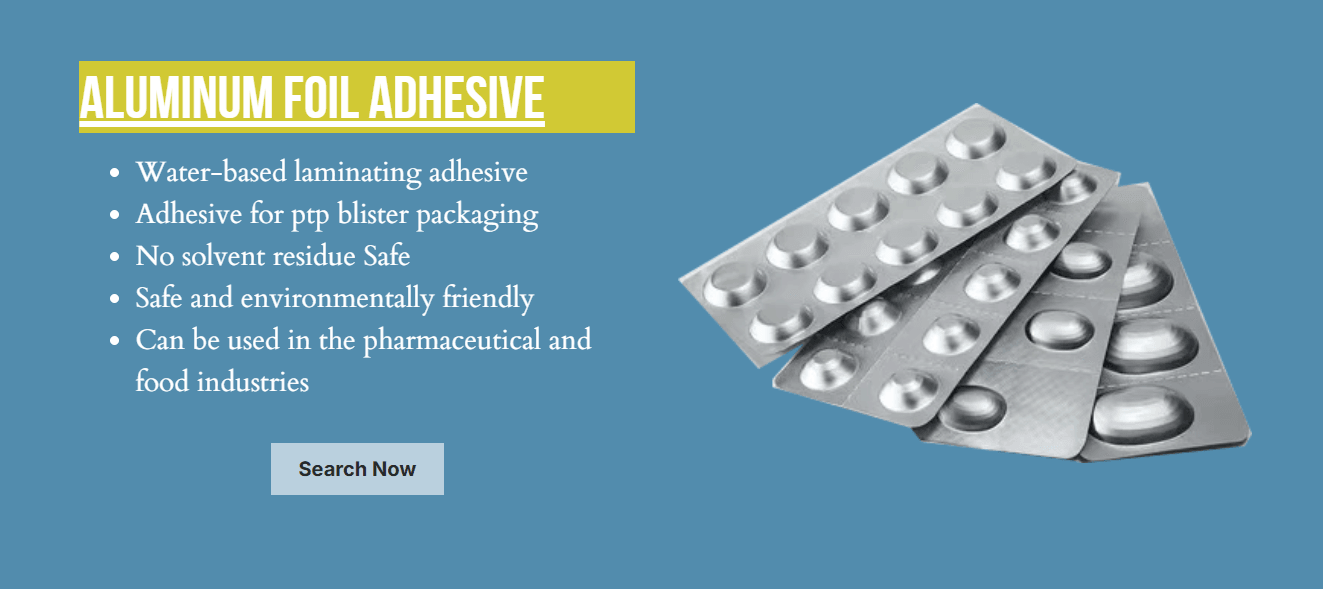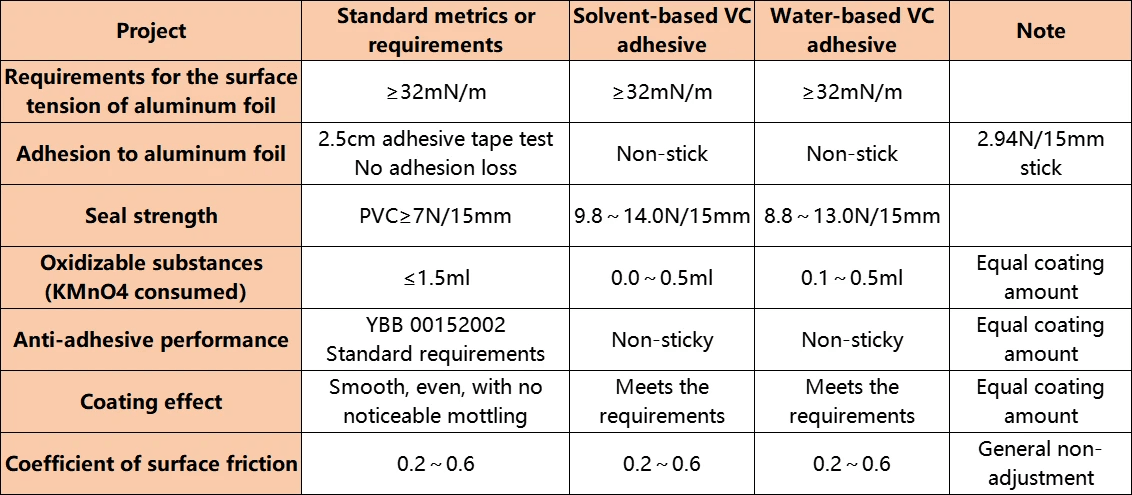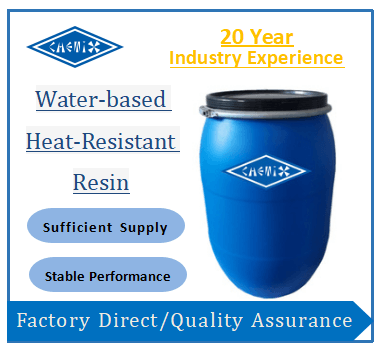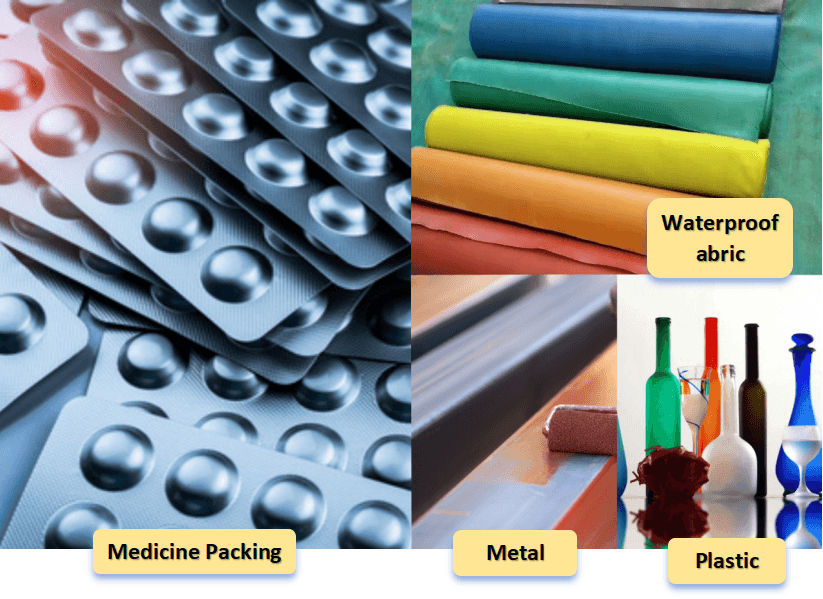Introduction

Heat seal adhesives are specially formulated to create strong bonds through the application of heat and pressure, making them indispensable in various industries. Understanding what heat seal adhesive is and how it works can significantly enhance the quality and efficiency of your packaging processes.
Understanding Heat Seal Glue for Packaging
Heat seal glue for packaging bags is a type of adhesive that activates under heat, allowing two surfaces to bond together effectively. This innovative solution not only provides a reliable seal but also enhances the overall aesthetic appeal of the packaging by eliminating the need for visible fasteners or closures. By grasping the mechanics behind these adhesives, businesses can optimize their packaging strategies and improve product integrity.
The Importance of Proper Sealing Techniques
Using appropriate sealing techniques is crucial for maintaining product freshness and safety while also ensuring customer satisfaction. Improper sealing can lead to leaks, spoilage, or contamination, which could ultimately harm a brand's reputation. By mastering effective methods—such as understanding what is the difference between a hot seal and a cold seal for a blister pack—companies can deliver superior products with confidence.
Choosing the Right Type of Seal
When it comes to selecting an adhesive method for your products, knowing how to hot seal a plastic bag or when to opt for cold sealing is essential. Different applications may require distinct types of seals based on factors such as temperature sensitivity and material compatibility. By carefully evaluating your options and choosing the right type of seal, you can ensure optimal performance in your packaging operations.
Overview of Heat Seal Adhesives

Heat seal adhesives are essential in the packaging industry, providing a reliable method for sealing various materials. These adhesives create strong bonds when heat is applied, making them ideal for products like plastic bags and blister packs. Understanding what heat seal adhesive is can help manufacturers choose the right product for their specific needs.
What is Heat Seal Adhesive?
What is heat seal adhesive? Simply put, it’s a type of adhesive that activates through heat to bond materials together. When heated, it melts and forms a strong bond between surfaces, ensuring that your packaging remains intact during storage and transport. This process is crucial for maintaining product integrity in packaging bags and other containers.
Types of Heat Seal Adhesives
There are several types of heat seal adhesives available on the market today, each designed for specific applications. Common varieties include thermoplastic adhesives, which melt upon heating and solidify as they cool; and reactive adhesives that undergo a chemical change when heated to form a bond. Understanding these differences can help you select the right heat seal glue for packaging bags based on your application requirements.
Applications in Packaging Industries
Heat seal adhesives find widespread use across various sectors within the packaging industry. They are commonly used in food packaging to ensure freshness while preventing contamination—think vacuum-sealed bags or snack wrappers! Additionally, they play a vital role in pharmaceuticals, where secure blister packs are essential; this raises the question: what is the difference between a hot seal and a cold seal for a blister pack? Each method has its own advantages depending on the materials involved and desired end-use.
Hot Seal vs. Cold Seal: What’s the Difference?

When it comes to sealing packaging, understanding the nuances between hot seal and cold seal methods is crucial. Both techniques utilize heat seal glue for packaging bags, but they operate on fundamentally different principles. Knowing what is the difference between a hot seal and a cold seal for a blister pack can help you choose the right approach for your specific needs.
How Hot Sealing Works
Hot sealing involves applying heat and pressure to two surfaces that need to be bonded together, typically using heat seal adhesives designed for this purpose. The heat melts the adhesive, allowing it to flow into the surfaces and create a strong bond upon cooling. This method is widely used in various industries due to its efficiency and reliability, especially when you want to hot seal a plastic bag.
In practice, hot sealing requires precise temperature control; too much heat can damage the material while too little may result in weak seals. It’s essential to choose an appropriate heat seal glue for packaging bags that can withstand these conditions without compromising integrity. The end result is a durable package that stands up to transportation and storage challenges.
Understanding Cold Sealing
Cold sealing, on the other hand, uses pressure-sensitive adhesives that bond without requiring any external heat source. This method relies on specially formulated adhesives that adhere when pressed together at room temperature or slightly elevated temperatures. For many applications in packaging industries, cold sealing provides an efficient alternative where traditional heating might not be feasible.
Cold seals are particularly beneficial for sensitive materials or products that could be damaged by high temperatures during processing or storage. However, using cold seals also means considering factors like humidity and surface cleanliness since these can significantly affect adhesion quality. Understanding how each type of adhesive works will guide you in selecting suitable options based on your packaging requirements.
Benefits and Limitations of Each Method
Both hot sealing and cold sealing come with their own sets of benefits and limitations worth considering before making a choice in your production line. Hot seals generally provide stronger bonds than cold seals due to the melting process of heat seal adhesives; however, they require more equipment investment and careful monitoring of temperature settings during application.
On the flip side, while cold seals offer ease of use with less equipment needed—making them ideal for quick setups—they may not provide as robust a bond as their hot-sealed counterparts under certain conditions. Additionally, environmental factors such as moisture can impact their effectiveness significantly more than hot seals would experience with proper application techniques like knowing how to hot seal a plastic bag effectively.
Ultimately, choosing between these two methods hinges on your specific packaging needs—whether durability or convenience takes precedence will dictate which option best aligns with your goals.
How to Hot Seal a Plastic Bag

Hot sealing is a fundamental technique in the packaging world, particularly when using heat seal glue for packaging bags. This method ensures that your products are securely sealed, maintaining freshness and preventing contamination. So, let’s dive into how you can effectively hot seal a plastic bag.
Preparing Your Materials
Before you start, gather all the necessary materials for hot sealing. You’ll need heat seal adhesive, a heat sealing machine or an iron, and the plastic bags you intend to seal. It’s important to ensure that your working area is clean and free from dust or debris that could interfere with the sealing process.
Make sure to choose the right type of heat seal adhesive based on your specific needs; not all adhesives are created equal! Understanding what is heat seal adhesive will help you select one that offers optimal bonding strength for your application. Once everything is ready, you're set for the next step!
Step-by-Step Hot Sealing Process
Now that you have everything prepared, it’s time to learn how to hot seal a plastic bag effectively! First, place the open end of the bag between the heating elements of your sealing machine or lay it flat on an ironing board if you're using an iron. Make sure that there are no wrinkles at the opening because they can lead to weak seals.
Next, set your machine or iron to the appropriate temperature as recommended by your heat seal adhesive's manufacturer—this varies depending on what kind of material you're working with! Apply even pressure for about 1-3 seconds (again depending on material) and then carefully remove it from the heating element while allowing it to cool down completely before handling it further. Voila! You now have a securely sealed bag.
Troubleshooting Common Hot Sealing Issues
Even seasoned pros run into hiccups when learning how to hot seal a plastic bag; don't fret if things don’t go perfectly at first! One common issue might be weak seals; this could mean either insufficient temperature or pressure was applied during sealing. Always refer back to your product guidelines for optimal settings.
Another problem could be uneven seals caused by improper alignment of materials before applying heat; make sure everything is straightened out beforehand! If you notice any residue left from your heat seal glue for packaging bags after cooling down, clean up with warm soapy water—this will help maintain equipment longevity and performance.
In summary, mastering these steps will enhance your understanding of Heat Seal Adhesives and their applications in various industries while ensuring quality results every time!
Best Practices for Using Heat Seal Glue

When it comes to using heat seal glue for packaging bags, there are several best practices that can help ensure optimal results. Understanding the nuances of Heat Seal Adhesives is crucial, as different products are designed for various applications and materials. By following these best practices, you can maximize efficiency and achieve strong, reliable seals in your packaging processes.
Choosing the Right Product
Choosing the right heat seal glue for packaging bags is essential for achieving high-quality seals. Not all adhesives are created equal; some are specifically formulated for particular materials or environmental conditions. To make an informed decision, consider factors such as the type of plastic you’re sealing, the intended use of the package, and any regulatory requirements that may apply to your industry.
When selecting a product, it's also important to understand what heat seal adhesive is best suited for your application. For instance, if you're working with delicate materials or need a quick-drying solution, specific formulations may be more effective than others. Always consult product specifications and user reviews to find an adhesive that meets your unique sealing needs.
Temperature and Pressure Guidelines
Temperature and pressure play a critical role in the effectiveness of heat seal adhesives. Each type of adhesive has its own optimal temperature range; exceeding this can lead to poor adhesion or even damage to your packaging material. It's essential to refer to manufacturer guidelines when determining how hot to set your sealing equipment.
Pressure is equally important—too little pressure may result in weak seals while too much can cause material distortion or failure during sealing. Experimenting with different combinations of temperature and pressure will help you find the sweet spot that yields strong seals without compromising package integrity. Remember: consistency is key!
Ensuring Strong Seals
To ensure strong seals when using heat seal glue for packaging bags, focus on proper application techniques alongside suitable products and settings. Make sure surfaces are clean and free from contaminants before applying adhesive; even minor residues can weaken bond strength significantly. Additionally, ensure that you're applying enough adhesive evenly across the surface area being sealed.
Regular maintenance of your sealing equipment also contributes significantly to achieving robust seals over time—worn-out parts or inconsistent heating elements can lead to variability in results. Don’t hesitate to troubleshoot common hot sealing issues if you notice problems; understanding what is the difference between a hot seal and a cold seal for a blister pack could provide insights into improving your process as well!
By adhering closely to these best practices—choosing appropriate products, adhering strictly to temperature and pressure guidelines, and ensuring meticulous application—you'll be well on your way toward mastering effective use of heat seal adhesives in all your packaging endeavors.
Exploring Chemix's Water-Based Resin Solution

In the ever-evolving world of packaging, Chemix's water-based resin solution stands out as a game-changer. This innovative adhesive offers a host of advantages that make it an attractive option for manufacturers looking to optimize their packaging processes. With its unique properties, it addresses many common challenges faced in the application of heat seal glue for packaging bags.
Advantages of Water-Based Resins
One significant advantage of water-based resins is their low environmental impact compared to solvent-based counterparts. These resins are less volatile and produce fewer harmful emissions during application, making them safer for both workers and the environment. Additionally, they often provide excellent adhesion and flexibility, ensuring that your heat seal adhesives perform reliably under various conditions.
Another benefit is their ease of use; water-based resins can be easily cleaned up with just soap and water, reducing downtime between projects. This convenience not only saves time but also minimizes waste generated from cleaning materials. Furthermore, because they are typically non-toxic and odorless, these resins enhance workplace safety while maintaining high performance standards in packaging applications.
Finally, water-based resins can offer superior bonding strength when used as heat seal glue for packaging bags, ensuring that seals remain intact during storage and transportation. Their versatility allows them to be adapted for different substrates and sealing methods, including hot sealing techniques that are crucial in creating durable packages. As a result, manufacturers can achieve stronger seals without compromising on sustainability or safety.
Applications in Packaging and Adhesives
Water-based resins have found widespread applications across various sectors within the packaging industry. From food products to consumer goods, these adhesives are ideal for creating secure seals on flexible packaging materials such as films and laminates. Given the increasing demand for eco-friendly solutions in today's market, using water-based heat seal adhesives aligns perfectly with consumer preferences for sustainable products.
In addition to traditional uses in food packaging, these adhesives have proven effective in crafting blister packs—a common application where understanding what is the difference between a hot seal and a cold seal for a blister pack becomes essential. The ability to create strong bonds without harmful solvents makes them suitable for sensitive items like pharmaceuticals or electronics that require precise sealing techniques to maintain product integrity.
Moreover, manufacturers have begun leveraging these innovative solutions beyond mere sealing tasks; they use them in labels and coatings as well! This versatility allows businesses to streamline production processes by utilizing one type of adhesive across multiple applications while still benefiting from the superior performance characteristics offered by water-based options.
Environmental Benefits of Water-Based Solutions
The environmental benefits of adopting Chemix's water-based resin solution cannot be overstated—especially when discussing heat seal glue for packaging bags! By minimizing volatile organic compounds (VOCs) released into the atmosphere during production processes or end-use applications alike contributes significantly towards reducing overall carbon footprints associated with manufacturing activities.
Furthermore, using such eco-friendly adhesives aligns companies with global sustainability goals aiming at reducing plastic waste generated by conventional materials used throughout supply chains today! Transitioning towards more environmentally responsible practices resonates well with consumers increasingly prioritizing brands committed to minimizing their ecological impact—ultimately enhancing brand loyalty over time!
Lastly—and perhaps most importantly—water-based solutions promote better recycling outcomes since they do not contaminate recyclable materials like some solvent-based alternatives might do upon disposal! As industries continue striving toward circular economy principles where resources get reused rather than discarded indefinitely; embracing innovative technologies like Chemix’s offerings positions businesses favorably within this transformative landscape shaping our future!
Conclusion

In the fast-paced world of packaging, mastering heat seal techniques can significantly enhance operational efficiency. By utilizing heat seal glue for packaging bags, businesses can ensure that their products remain secure and intact during transit and storage. This not only minimizes waste but also maximizes customer satisfaction through reliable product presentation.
Maximizing Efficiency with Heat Seal Techniques
Heat seal adhesives are pivotal in streamlining packaging processes, as they provide strong bonds that are essential for various applications. Understanding how to hot seal a plastic bag correctly is crucial for achieving optimal results; improper sealing can lead to leaks or compromised integrity. By investing time in learning the nuances of heat sealing, companies can avoid costly mistakes and improve overall productivity.
The Versatility of Heat Seal Adhesives
When we ask, What is heat seal adhesive? the answer reveals a wide range of applications across multiple industries—from food packaging to electronics. The versatility of these adhesives allows them to adapt to different materials and conditions, making them an invaluable asset in modern manufacturing. With options like hot seals and cold seals available, businesses can choose the best method tailored to their specific needs.
Future Trends in Packaging Solutions
As sustainability becomes increasingly important, many companies are exploring eco-friendly alternatives like water-based resins for heat sealing applications. This shift reflects a broader trend towards environmentally responsible practices within the packaging industry, ensuring that future solutions not only meet performance standards but also align with consumer values. Understanding what is the difference between a hot seal and a cold seal for a blister pack will be essential as these trends evolve—offering new opportunities for innovation while still relying on effective heat seal glue for packaging bags.
